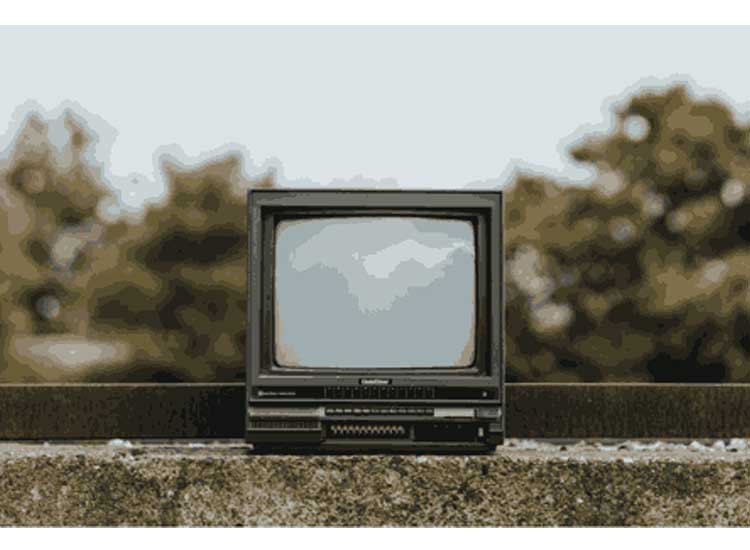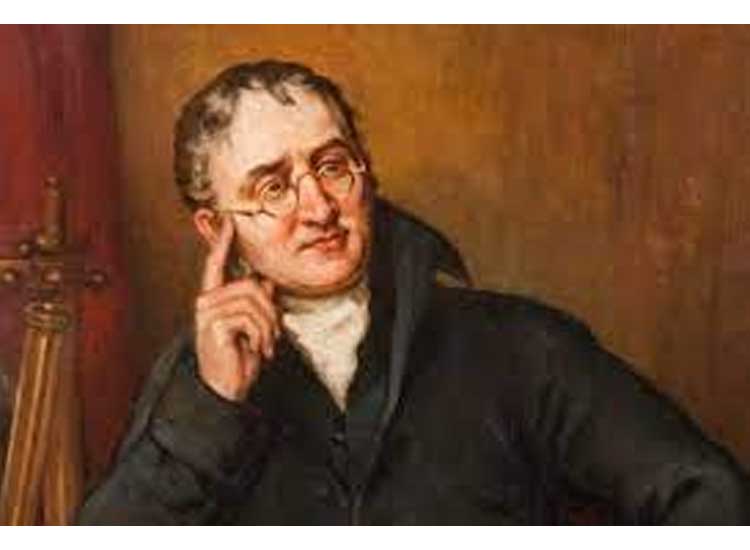History of the Inventor of Mechanical Television and Its Development -Inventor of Television – Nowadays, television has become an important necessity for every home to have. Apart from functioning as an entertainment medium, television can also be used as a source of all information. It is not surprising that every house now has its own television. Relaxing with your family by watching television can also be an idea for enjoying a cheap holiday or weekend.
If you pay attention, as technology develops, this electronic device has always been a quite enjoyable entertainment medium. The large number of programs broadcast on television is an attraction in itself. But have you ever thought that television was never invented? What is our life like now? It seems we have to thank the inventor of mechanical television and other types of television that have made life more enjoyable.
Along the way, many scientists are known to have been involved in the idea of developing television technology. There are two figures who are considered to have had the greatest contribution to the invention of television. These two people are John Logie Baird and Philo Farnsworth. For more details, let’s look at the following explanation:
Inventor of Mechanical Television: John Logie Baird
John Logie Baird, a man from Scotland, was born on August 13, 1888 in Helensburgh, Scotland. He died on June 14 1946 in Benhil On Sia, England at the age of 57 years. Logie Baird was the inventor of the first mechanical television who showed that visual images could be transmitted. He is credited with being the first person to invent television and also received his education at the Royal Technical College of the University of Glasgow. However, due to his poor health, Logie Baird no longer participated in World War I and in the end he chose to become an electrical engineer. Then he decided to focus on electronic devices, especially after Guglielmo Marconi’s demonstration that radio waves could be used to carry radio signals.
Logie Baird believed that the same process could also send a visual signal and after that he immediately got to work and created a television design. The design created by Logie Baird was a device called the Nipkow Disk. This scanning disk was created in 1884 by a German scientist, Paul Nipkow. Basically, the device consists of a cardboard disk with a series of square holes located inside in a spiral position when combined with a photoelectric cell.
In 1920, Logie Baird decided to return to England and began conducting research on how to transmit moving images and sound. Because he lacked sponsors, Logie Baird finally used materials that could be found at that time. The first television he made was a television made from cardboard, thread, candles, bicycles and lamps. Then in 1924, he was able to transmit images from a distance of several meters. Then, in 1925, Logie Baird succeeded in broadcasting puppet shows.
Not long after that, Logie Baird then announced and demonstrated his findings in public. To be precise, at the Selfridge’s department store located in London, England. In 1926, Logie Baird demonstrated his innovation in front of 50 scientists at Britain’s Royal Institution in London. However, one of the journalists present stated that the images broadcast looked blurry and sometimes dim, but still supported the claim that televisions can transmit and produce detailed movements, such as facial expressions, even in a short time.
Finally in 1927, Logie Baird was able to send images and sound from a fairly long distance of 643 kilometers using telephone cables from London to Glasgow. Then in 1928, Logie Baird sent his first television transmission across the Atlantic Ocean from London to New York. Then in 1929, the BBC began using technology created by Logie Baird to broadcast their first television programs. But as previously explained, the television created by Logie Baird at that time still had many shortcomings. Because the television works mechanically, the image displayed still looks blurry and sometimes flickers.
Inventor of Electronic Television: Philo Farnsworth
The inventor of the electronic television that we all use today is Philo Farnsworth II. He is the inventor of television from the United States. Farnsworth was born on August 19, 1906. Since childhood, Farnsworth has had an interest in engineering. Then when he was a teenager, Farnsworth began to learn about television technology at that time and thought that the mechanical system used was still too slow to compose and read images in a matter of seconds. Farnsworth believes that only an electronic system can do this quickly.
Then in 1922, Farnsworth began working on a rough design of an electronic television. The following year, when he was still in high school, Farnsworth was also registered as a special student at Brigham Young University. However, in 1924 his father died and this incident forced him to leave Brigham Young. Farnsworth had to finish high school while working.
After his dream of developing electronic television was put on hold, in 1926 Farnsworth began working again to collect funds from donations from Leslie Gorrell and George Everson. Farnsworth convinced the two to work together to produce the electronic television system he had designed.
Not long after that, Farnsworth moved to Los Angeles and started his work with funds amounting to USD 6,000 which he received from Gorrell and Everson. Everson even obtained and additional amount of USD 25,000 and also laboratory space located at the Crocker First National Bank of San Francisco for Farnsworth. Finally, on September 7, 1927, Farnsworth succeeded in broadcasting a broadcast via his electronic television and patented his invention in the same year.
History of Television Development
The history of television was not born in a short time and was discovered by a single inventor. It should be noted that the invention of television was attempted by many people who worked together for many years to produce the very sophisticated television it is today. Earlier we discussed the inventor of mechanical and electronic television. So in this discussion, we will find out more about the history of television development starting from color television, digital, and others. Here is the explanation:
1. Color Television
At the beginning of its development, television was not yet able to display color images. The color format of television images still uses black and white. Then the development of color television began with Baird Television or CBS. However, the system developed was apparently not compatible with black and white television formats throughout the country. Then, the Radio Corporation of America or RCA adopted a color CBS television system for use in its televisions. Finally, the color television system designed by RCA succeeded in displaying color images and could be received by televisions in black and white format. After that, RCA demonstrated the capabilities of the color system they created and then the National Television Standards Committee or NTSC patented it for use as a commercial broadcast medium in 1953.
The color system patented by NTSC is the system used in analog television. This system is mostly used in the United States and several East Asian countries such as Japan, China, South Korea, Mongolia and also Taiwan. The development of the color television system is the Phase-Alternating Line (PAL) system or alternative phase line. This system is a color coding system used in broadcast television systems used throughout the world. PAL was then developed again in Germany by Walter Bruch.
2. Digital Television
Decades later until the beginning of the new millennium in the 21st century, people could talk via digital cell phones and send electronic mail via the world’s computer network. Meanwhile, the development of TV technology essentially remains the same. However, the developments are in stereo sound systems and also better color formats. However, the development of TV technology is slowly starting to enter the digital era.
In English, digital television is called DTV or digital television. DTV is a type of television that uses digital modulation and compression systems which function to distribute audio, video and data signals to television sets. High-resolution digital television or HDTV (High-definition Television) is an international digital television standard that is broadcast using the 16:9 format. Where ordinary television only uses 4:3 format and also 5.1 Dolby Digital surround-sound. However, HDTV has a higher resolution than old television standards. Apart from that, HDTV also displays images with clear contours, more mature color formats, and a wider viewing range or depth-of-field compared to old television standards. Then, HDTV also has a higher number of pixels, namely up to 5 times the PAL analog television standard used in Indonesia.
3. Cable Television
Cable television is a TV program broadcasting system that uses radio frequencies with coaxial cable or fiber optic media. Unlike television broadcasts in general which must be captured by an antenna, cable television broadcasts do not pass through air media. Cable television networks can also be used for internet, telephone and FM radio.
Like radio systems, cable television also uses different frequencies that are passed along one cable. each of these frequencies is used to broadcast one channel through the receiver contacts which are used to select one television channel. Nowadays, cable television systems usually use digital technology which functions to broadcast more digital TV channels compared to analog systems. Cable television systems are found in North America, Australia, Europe, the Middle East and South America. However, cable television systems are less successful in Africa because the population density is too low.
4. Satellite Television
Satellite television is a television system that is transmitted using satellites. The television system is almost the same as satellite communications and can also be compared to local television and cable television. Satellite television services can increase signal strength and also produce a wider channel range compared to other television systems. But it needs to be understood that the satellite television system is a pay television service.
The first satellite television system was broadcast directly from the European Continent using the Telstar satellite over North America in 1962. Later, many satellites were used for satellite television services, such as geosynchronous communications satellites. The first time Syncom two was launched in 1963. The world’s first commercial communications satellite, namely Intelsat, called Early Bird, was launched into orbit on April 6, 1965. Then the first national television system network satellite was Orbita, which was created in the Soviet Union in in 1967. Until finally, the first domestic satellite was launched in North America in 1872 and carried television broadcasts, namely the Anik 1 satellite belonging to Canada.
History of Television in Indonesia
In Indonesia, television has a fairly long history and development. The history of television in Indonesia begins with the broadcast of the first television station in Indonesia, namely Televisi Republik Indonesia or what we know by the abbreviation TVRI. This TV station began broadcasting its first broadcast on August 17 1962. TVRI at that time broadcast the commemoration of August 17 or Indonesian independence day from the courtyard of the Merdeka Palace in Jakarta at that time. Previously, the TVRI station was a special program used to make the ASIAN Games held in Jakarta in 1962 a success. President Soekarno had a big role in developing TVRI as the first television station present in Indonesia.
On August 24 1962, TVRI again broadcast live broadcasts of the opening ceremony of the fourth Asian Games at the Gelora Bung Karno Stadium. Then that day is now celebrated as the birthday of the TVRI television station. After that, TVRI began broadcasting television shows again regularly to the general public. The government also then issued a Presidential Decree regarding the formation of the TVRI Foundation which acts as the regulatory body for TVRI broadcasting. At the beginning of its broadcast year, TVRI was able to attract 10,000 television owners in Indonesia.
From 1963 to 1976, TVRI established television stations in various big cities in Indonesia. Among them are Medan, Yogyakarta, Palembang, Makassar and Balikpapan. If previously TVRI only broadcast broadcasts in black and white color format, finally in 1979 TVRI started broadcasting television broadcasts in color format. From this history, TVRI has become the forerunner of communication media in Indonesia.
In Indonesia itself, the development of television programs is one of the most interesting things to discuss. At the beginning of the emergence of TV stations in Indonesia, television was used to broadcast very important events, such as the Independence Ceremony and the Asian Games. As time and technology develop, television programs are starting to become more varied. Programs are starting to appear that are both entertaining and educational.
That is an explanation of the history of the inventor of mechanical television and other types of television and their development to date. Apart from that, we also discuss the development of television in Indonesia. What TV programs do you currently like to watch?
Link Terkait :



